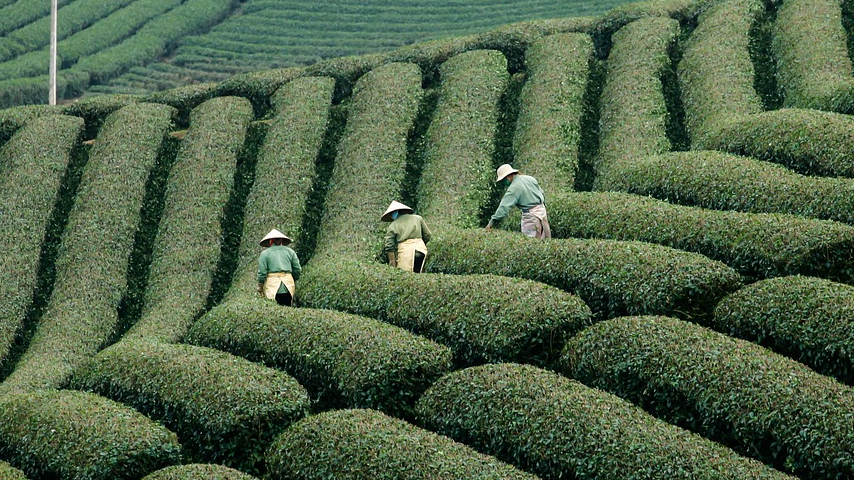Adopting AgTech Solutions: How Startups are Changing Crop Risk Management
In recent years, the agricultural sector has been undergoing a significant transformation, driven by advancements in technology. This shift, often referred to as AgTech, is particularly vital in the realm of crop risk management. As global challenges such as climate change, population growth, and resource scarcity mount, innovative solutions from startups are emerging to help farmers manage risks effectively. This article explores how AgTech startups are revolutionizing crop risk management, focusing on various technologies, methodologies, and the role of field management system in optimizing agricultural practices.
Understanding Crop Risk Management
Crop risk management involves strategies and tools used by farmers to mitigate potential losses caused by various factors such as weather conditions, pest infestations, market fluctuations, and disease outbreaks. Effective risk management not only protects the farmers’ investments but also contributes to food security and sustainability. Traditional methods often fall short in addressing the complexities of modern agriculture, which is where AgTech solutions come into play.
The Rise of AgTech Startups
AgTech startups are leveraging innovative technologies to provide farmers with tools that enhance their decision-making capabilities. These startups are focused on various areas, including data analytics, automation, IoT (Internet of Things), and machine learning, all of which play a crucial role in improving crop risk management. Their solutions empower farmers to adopt precision agriculture practices that increase efficiency and reduce risks.
1. Data Analytics and Predictive Modeling
Data analytics is at the core of many AgTech solutions. Startups are harnessing large datasets to help farmers understand trends and make informed decisions. For instance, predictive modeling can analyze historical weather data, soil health information, and crop performance metrics to forecast future risks.
- Example: A startup might develop a platform that integrates weather forecasts, satellite imagery, and historical yield data to provide farmers with insights on when to plant or harvest. By predicting adverse weather conditions, farmers can take proactive measures to safeguard their crops.
2. Remote Sensing Technologies
Remote sensing technologies, including satellite imagery and drones, allow farmers to monitor their fields in real-time. These technologies provide valuable data on crop health, soil moisture levels, and pest infestations.
- Example: Startups are utilizing drones equipped with multispectral cameras to capture high-resolution images of fields. By analyzing these images, farmers can detect early signs of disease or nutrient deficiencies, enabling timely intervention and minimizing potential losses.
3. Internet of Things (IoT) Devices
IoT devices are becoming increasingly popular in agriculture, enabling real-time monitoring and control of various parameters within the farming environment. These devices can measure soil moisture, temperature, humidity, and other critical factors that influence crop health.
- Example: IoT sensors can be placed throughout a field to continuously monitor soil conditions. Data collected can be sent to a central dashboard, allowing farmers to make data-driven decisions about irrigation and fertilization. This not only optimizes resource use but also reduces the risk of crop failure due to environmental stresses.
4. Field Management Systems
Field management systems (FMS) play a crucial role in integrating various AgTech solutions. These systems provide a comprehensive platform for managing all aspects of farming operations, from planting to harvest. By consolidating data and offering analytical tools, FMS enables farmers to streamline their processes and enhance risk management.
- Example: An FMS might offer features such as field mapping, crop rotation planning, and yield monitoring. By utilizing an FMS, farmers can easily track their activities, analyze historical data, and identify patterns that could indicate potential risks.
AgTech Startups Leading the Way
Several AgTech startups are making significant strides in crop risk management through their innovative solutions. Here are a few notable examples:
1. Farmers Edge
Farmers Edge is a precision agriculture company that provides farmers with data-driven insights to optimize their operations. Their platform integrates data from various sources, including weather forecasts, soil sensors, and satellite imagery, to deliver actionable recommendations.
2. Ceres Imaging
Ceres Imaging specializes in aerial imagery and analytics for agriculture. Their technology enables farmers to monitor crop health, water usage, and nutrient levels, allowing for targeted interventions that mitigate risks.
3. AgriWebb
AgriWebb offers a farm management platform that helps farmers streamline their operations. Their solution includes features for monitoring livestock, managing crops, and analyzing performance metrics, all of which contribute to better risk management.
4. Taranis
Taranis is a precision agriculture startup that uses computer vision and machine learning to identify and predict crop threats. Their platform analyzes high-resolution aerial imagery to detect early signs of pests and diseases, enabling timely intervention.
Challenges and Considerations
While the adoption of AgTech solutions presents numerous benefits for crop risk management, there are challenges that must be addressed:
1. Data Privacy and Security
As farmers increasingly rely on data-driven solutions, concerns about data privacy and security arise. Ensuring that sensitive agricultural data is protected is essential for building trust between farmers and AgTech companies.
2. Integration with Existing Practices
Farmers often have established practices and may be hesitant to adopt new technologies. AgTech startups must focus on creating user-friendly solutions that integrate seamlessly with existing workflows to encourage adoption.
3. Cost Considerations
The cost of implementing AgTech solutions can be a barrier for some farmers, particularly smaller operations. Startups need to offer scalable solutions and consider flexible pricing models to accommodate various budgets.
The Future of Crop Risk Management
The future of crop risk management lies in the continued evolution of AgTech solutions. As technology advances, farmers will have access to increasingly sophisticated tools that enhance their ability to manage risks effectively. The integration of AI and machine learning will further improve predictive analytics, enabling farmers to anticipate challenges and respond proactively.
1. Sustainability and Resilience
Sustainable farming practices will become increasingly important as environmental concerns grow. AgTech solutions will play a vital role in promoting sustainable agriculture by optimizing resource use and minimizing waste. Startups focusing on these principles will be essential in helping farmers adapt to changing conditions.
2. Collaboration and Knowledge Sharing
Collaboration among AgTech startups, farmers, researchers, and policymakers will be crucial for fostering innovation. Knowledge sharing will help identify best practices and create a supportive ecosystem that encourages the adoption of new technologies.
3. Global Reach and Accessibility
AgTech solutions must be accessible to farmers worldwide, including those in developing regions. Startups will need to consider local conditions and challenges to create tailored solutions that empower farmers globally.
Conclusion
AgTech startups are fundamentally changing the landscape of crop risk management. By harnessing data analytics, remote sensing technologies, IoT devices, and comprehensive field management systems, these innovative companies are helping farmers navigate the complexities of modern agriculture. As challenges such as climate change and resource scarcity persist, the adoption of AgTech solutions will be critical for building resilience and ensuring sustainable food production.
Farmers who embrace these advancements will be better equipped to manage risks, optimize their operations, and contribute to global food security. As the AgTech sector continues to grow and evolve, its impact on crop risk management will undoubtedly be profound, transforming the way we approach agriculture for years to come.














Post Comment